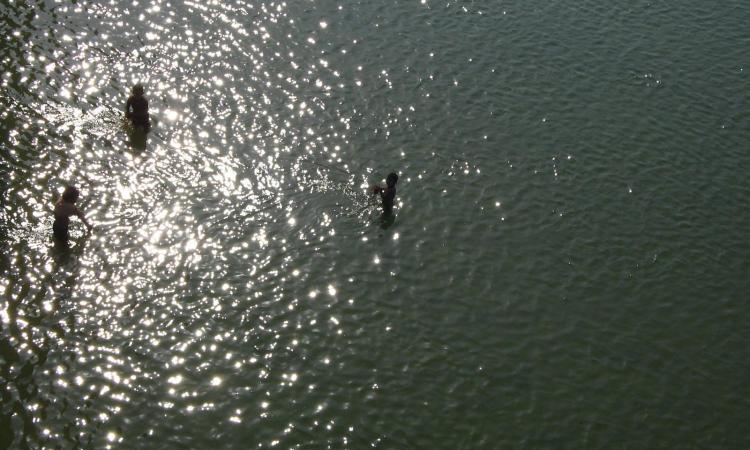
Significant drop in the volume of Ganga river water and groundwater in the river basin, reveals WMO report
As per a report by the World Meteorological Organisation (WMO), titled State of Global Water Resources 2021, the volume of water available in the Ganga and the groundwater in the river basin have both seen a significant fall between 2002 and 2021. While Ganga is not the only river basin, the report has identified several other global hot spots that show the same trend as Ganga, including the São Francisco River basin, in Patagonia, the Indus headwaters, and basins in south-western US. However, the Great Lakes region, has seen a positive trend, as have the Niger basin, and the North Amazon basin but overall, the negative trends are stronger than the positive ones globally.
Drier than normal conditions in 2021 as rainfall patterns were influenced by climate change and a La Niña event and over-extraction of groundwater for irrigation are attributed to be the cause of the alarming trend.
(Hindustan Times)
Floods and storms cost India $7.6 bn in 2021, reveals recent climate report
According to the recently released The State of the Climate in Asia 2021 report India suffered huge economic losses from floods and storms in 2021 as climate change has made these events more frequent. In another report published by the World Meteorological Organization and the UN Economic and Social Commission for Asia and the Pacific (ESCAP), flooding caused a total loss of $3.2 billion in India, with about 1,300 casualties along with damaging crops and properties. The report further stated that storms also caused significant economic damage, especially in India ($4.4 billion), followed by China ($3 billion) and Japan ($2 billion).
As per the estimates by ESCAP’s Asia-Pacific Disaster Reports of 2021 and 2022 India would need an annual investment in adaptation measures at $46.3 billion which is estimated to be 1.7 percent of India’s GDP.
(Down to Earth)
A new lease of life for Dal Lake as the government is opening 20 navigation channels after decades
After decades, the government of Jammu & Kashmir is opening 20 navigation channels in the Dal Lake, with an aim to improve the quality of water in the lake and free movement of locals and tourists into the interiors of the lake.
The opening of the navigation channels will not only allow the inhabitants to move freely but also improve the quality of lake water as these channels help the water to circulate.
Along with this, there are plans to lay a sewage system for the houseboats to dispose of the waste in the treatment plant. Sewage coming from the houseboats is one of the major pollutants for the lake, with more than 600 houseboats on the lake, there has not been a proper sewage system in place for these houseboats for decades, however, the new sewerage system will help clean the lake and to nurture the aquatic life in the lake. (Wion)
India to suffer 34 million job losses from heat stress associated productivity decline, warns World Bank report
According to the World Bank report titled "Climate Investment Opportunities in India's Cooling Sector", India will soon be one of the first countries that will experience severe heatwaves that will break the human survivability limit.
The report warns that the rising heat across India can jeopardize economic productivity and the country may account for 34 million of the projected 80 million global job losses from heat stress associated productivity decline.
The heat waves will also impact India’s long-term food and public health securities as the rising temperature will affect the cold chain facilities of the country. (Livemint)
Bihar installs sensor-based 'Internet of Things' devices in 30 districts to ensure drinking water supply
With an aim to ensure uninterrupted drinking water supply in rural areas and monitor Har Ghar Nal Ka Jal project, the Bihar administration has installed sensor-based 'Internet of Things' (IoT) devices in 50,384 wards across 30 districts. The IoT devices, installed in water towers, allow officials to monitor functioning of motorised pumps. The devices also detect wastage or excessive use of water by people.
According to a senior official, “The IoT-based remote monitoring provides real-time information without any manual intervention. This allows effective monitoring and management of the water supply scheme on the ground”.
(NDTV)
This is a roundup of important news published from November 20 - December 10, 2022. Also, read policy matters this fortnight.
/articles/water-storage-river-basins-dips-2021-drier-normal-conditions-blame-wmo